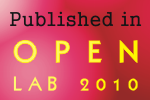Over the next few posts I’ll discuss the importance of sound scientific literacy in understanding the science and societal impacts of the flu and flu vaccination. Many people are rightly concerned about their health and the health of their family. Yet, we get so many messages that warn us to beware of vaccines or of the science behind them as if there are battalions of faceless sinister people in lab coats who want to do harm to the general public. It is this latter sentiment, of fear and mistrust, especially among people from minority communities, that I want to address. Though there are accounts from history that have abused helpless and oppressed peoples, it is important to know that today science is a transparent process consisting of many diverse peoples. Everyone is watching – other scientists, the community, independent professional overseers, and government regulators. And everyone is participating – people of color, people of pallor, people from wealthy nations and poor nations, people with children, parents, pets, and concern for the environment. “Scientist” is not a universal term to describe uncaring, reckless persons without regard for others.
In today’s post, I’ll address the concerns most people express:
Selecting which flu viruses will go into the vaccine
The UN World Health Organization (WHO), along with our own Centers for Disease Control (CDC) tracks the worldwide prevalence of every kind of flu all year round. In February, WHO makes recommendations to Public Health Agencies of nations in the Northern Hemisphere. They say
How long does it take to manufacture seasonal influenza vaccine?
To make the vaccine, the first thing that must be done is to make copies of it – millions of them – which happens in chicken eggs. Next, scientists remove the viruses, purify them – taking away the parts that will make you deathly ill but keeping enough of the virus’ signature elements to mount an immune response in your body. (I’ll discuss the immune system and immune response tomorrow). Stuff the vaccine in syringes or tubes and send them off to the places they are needed.
Companies were well under way making seasonal flu vaccine - to be distributed early August through October - when the first death from the swine flu was confirmed in the US in April 2009. The alarms were raised, and public health officials starting saying out loud, “We might want to be ready for this one. It’s the big, bad virus on the block for the Southern Hemisphere Flu season.” By all accounts, the US acquired the seed stock of the virus this spring, in April/May 2009 and production began immediately. Presumably, they’ve been working overtime to get it done with promises then to supply vaccine in October – which is now, a little shy of the 6 month period reported by CDC.
The Swine Flu Vaccine is made and tested the exact same way our seasonal flu vaccine is made. In fact, had WHO made the recommendation and the FDA had access to a reference strain of the virus, it would have been included in the routine seasonal flu shot. There wouldn’t be a distinction between the varieties. In fact, H1N1 is also the name of the seasonal flu virus in the routine flu shot. They are related viruses, but vaccination against the routine version does not automatically protect you from the swine version. So, in my opinion the Swine Flu Vaccine and the Season Flu vaccine are safe.
Interestingly, many people’s conflict about taking the swine flu vaccine may not materialize. You may come into contact with the virus before vaccine is available. Already, the 2009 H1N1 Virus (Swine flu) is widespread across the US – and this is NOT, repeat, NOT the height of the official flu season for our region. That means people are getting it and dealing with it the old-fashioned way: rest, liquid, volunteer quarantine, and medical intervention ASAP.

References:
Selecting the Viruses in the Seasonal Influenza (Flu) Vaccine
Centers for Disease Control and Prevention, updated August 1, 2009
More information about Swine Flu and Seasonal Flu vaccination production:
How Fast Could a Swine Flu Vaccine Be Produced? TIME, April 2009
Companies starting work on H1N1 vaccine- CDC Reuters, May 2009
Swine flu: why does it take so long to make a vaccine? Effect Measure Public Health Scienceblog, May 2009
Swine Flu Vaccine production way behind schedule Healthcare Digital October 22, 2009
More information about Influenza and its impact:
The Influenza Pandemic of 1918 M. Billings, Stanford University
Swine influenza, seasonality, and the northern hemisphere Virology Blog, April 2009
Influenza Pandemics of the 20th Century E.D. Kilbourne, New York Medical College






















4 comments:
This is great information; and it's more proof that consumers need to do their homework before jumping on the bandwagon.
I posted a short blurb on my blog with a link to your essay on H1N1 vaccination. I wanted to put a direct blog-to-blog link, and failed. I will try again, tomorrow.
Tom
Swine flu is really a burden of the world. Before having vaccination, consultation and a test is really needed to know how severe is your Swine flu. You can use elisa kit. There is an elisa kit manufacturer said that it really gives accurate result.
The best place for freelance projects is freelancing sites. Freelancing sites are the best option for part time home based business and freelance jobs. There are many types of work available at freelancing sites
www.onlineuniversalwork.com
Post a Comment